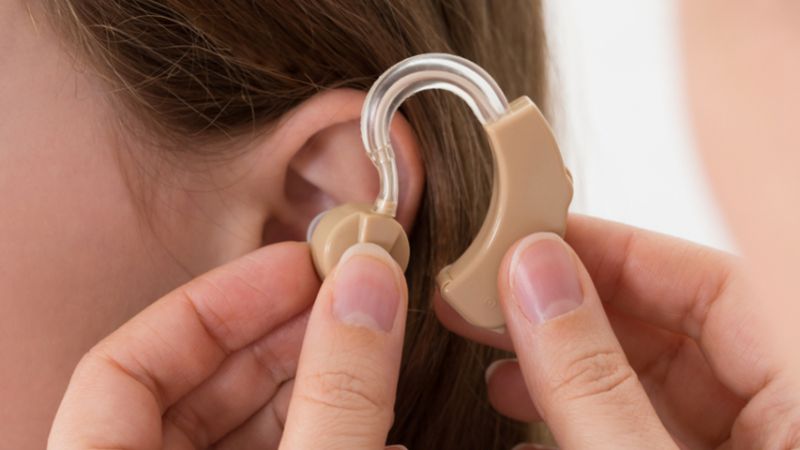“What?!” If you often find yourself repeating this question when people are talking to you, you are not alone. According to the National Institute on Deafness and Other Communicative Disorders (NIDCD), approximately 1 in 3 people between the ages of 65 and 74 has hearing loss, and that increases to 1 in 2 people once you’re over the age of 75.
In addition to finding yourself left out of conversations or unable to have phone conversations, hearing loss can also lead to increased falls. Since the inner ear plays a big role in maintaining balance, research has shown that even mild hearing loss can triple the risk of experiencing falls. While a medical alert system can provide you with round-the-clock access to help if you fall, hearing aids can help prevent the fall in the first place.
Hearing aids, which are small sound amplification devices worn inside or around the ear, are one of the most common ways to manage hearing loss. Hearing aids are an effective method of hearing loss management, however, the NIDCD has found that 1 in 3 adults over the age of 70 with hearing loss does not use them. There are many different reasons why people might avoid purchasing a hearing aid, including denial about their hearing loss and a feeling of shame in needing hearing assistance, but education about hearing aids shouldn’t be one of them.
We’ve partnered with ConsumerAffairs to put together a guide to hearing aids, as they can vary in price, placement, and features.
A Guide To Hearing Aids
While there are many types of hearing aids and many causes of hearing loss, the purpose of a hearing aid is always the same: to amplify sound and improve the wearer’s quality of life. When it comes to something as significant as hearing the sounds of life, choosing the right device can be life-changing.
ConsumerAffairs aims to answer common questions consumers may have about hearing aids, including important information consumers are interested in researching, and allows them to compare top brands in order to find the perfect device to meet their needs.
The Perfect Fit
One of the most important considerations when researching hearing aids is the way the hearing aid fits the ear, which affects the way it feels and works. One type is behind-the-ear aids, which are often used for children because of their design. A similar type is on-the-ear aids, which are a smaller version with increased comfort and less visibility. In-the-ear aids sit just inside the outer part of the ear and come in various color shades to blend in with the skin tone. The last type is in-the-canal aids, which sit completely inside the ear canal. This type offers the least amount of visibility and increased listening advantages.
Features
Aside from fit, other factors to take into consideration when researching hearing aids include noise reduction, feedback reduction, and speech enhancement. Noise reduction can come in the form of a wind noise manager, a directional microphone, or multiple channels that work to reduce ambient sound while amplifying speech. Many modern hearing aids are now equipped with technology that reduces feedback to prevent high pitched whistling. It’s also important to make sure your hearing aids are properly fitted to help prevent feedback. New technology (such as the directional microphone) can detect speech sounds to amplify those sounds while suppressing ambient noise. The same is true for amplifying softer voices that are lower in volume.
Price
Hearing aids are not inexpensive, which can also be a deterrent for people who truly need them. On the low end, hearing aids can cost $1000 and go up in price to over $4000 per device. While all hearing aids can assist in improving your hearing, some of them have more bells and whistles than others, affecting the price. Technological sophistication has a big impact on price. Technology has contributed to the evolution of hearing aids and the sound quality they provide users. It has even allowed hearing aids to become programmable through Bluetooth and Wi-Fi-enabled to control other devices in your home.
Hear, Hear
If cost is holding you back from purchasing hearing aids, there might be ways in which you can receive financial assistance to help you with the purchase. From health insurance to VA benefits to financing options, cost should never play a role in how you make decisions about your health.
If you or someone you love is considering hearing aids, check out ConsumerAffairs.com to do research and compare before you buy: https://www.consumeraffairs.com/health/hearing/

